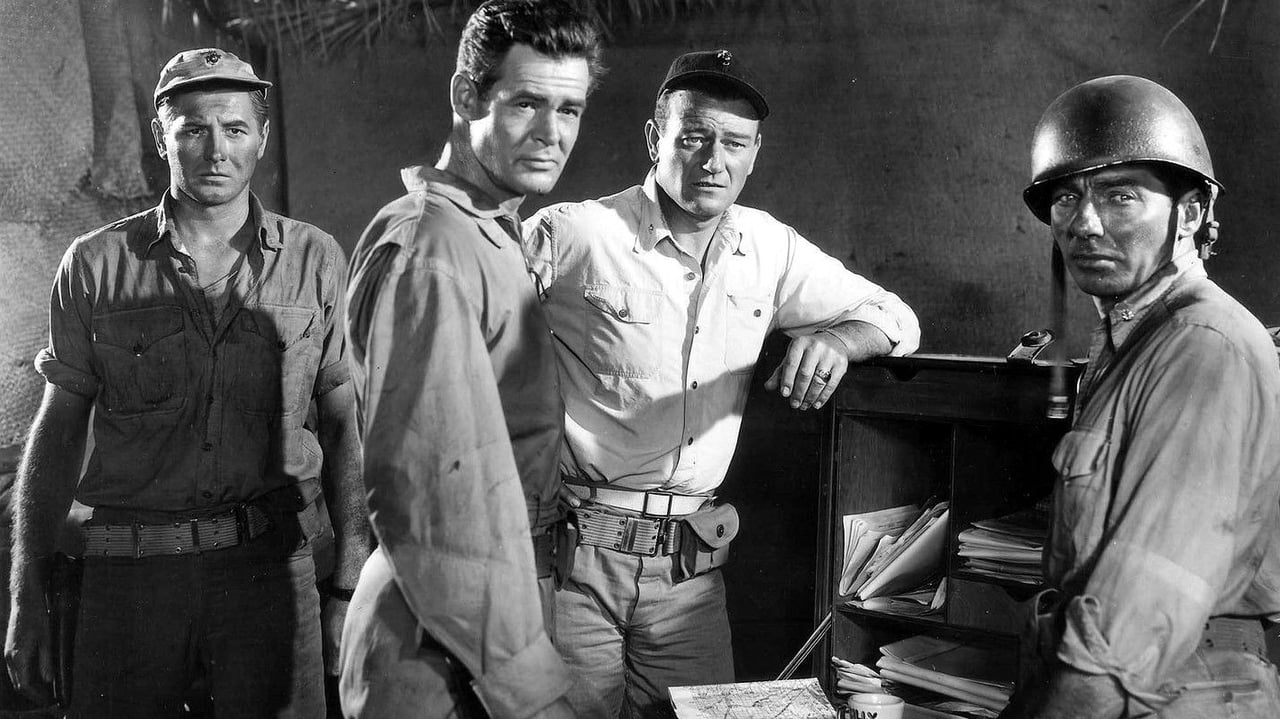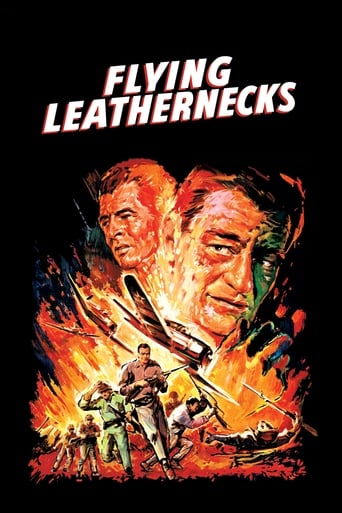

Purely Joyful Movie!
... View MoreThe film creates a perfect balance between action and depth of basic needs, in the midst of an infertile atmosphere.
... View MoreThis is a small, humorous movie in some ways, but it has a huge heart. What a nice experience.
... View MoreThe storyline feels a little thin and moth-eaten in parts but this sequel is plenty of fun.
... View MoreFLYING LEATHERNECKS is an example of the typical WW2 movie starring John Wayne. This one's unusual in that it was made in vivid Technicolour, and that it has a second lead in the form of Robert Ryan, himself a leading man familiar from many film noir movies made during the era. Much of the entertainment value comes from seeing the two stars butting heads while the main story involves the battle of Guadalcanal.I find that WW2 movies concentrating on pilots are more limited than those dealing with ground infantry; the action is invariably based around either special effects footage or, as in the case here, genuine stock footage of WW2 action. When the action's on the ground, you get up close and personal to it in a way that airborne movies lack. Still, this is acceptable enough genre fare for undemanding viewers, even if the pro-war message is wearyingly wholesome.
... View MoreFlying Leathernecks is the 1951 retelling of the air effort in the Pacific and the fighting specifically on Guadalcanal. John Wayne plays Major Kirby a veteran fighter pilot from the Battle of Midway that takes command of a squadron with little combat experience. It is a character study of the effects of combat and war. It is interesting to see its impact on these pilots, particularly Robert Ryan's character, referred to usually as 'Griff.' Different from WWII pictures of the time, Flying Leathernecks depicts some of the harsh realities and casualties of war. Some of the characters that were developed throughout the film, some that you grow to like, are sadly the ones that are killed and injured in combat. However, the best part of the film is the friction of Major Kirby and Griff. Ultimately the tough an unrelenting attitude of Major Kirby is what develops Captain Griffin into a fine pilot and a man Kirby recommends becoming an officer. This movie is good, but is saddled by the era it was created in. For any John Wayne fan, it is of course a must watch.
... View MoreMy angle on this film echoes some other posters who have a historical take on the film of which the most glaring inaccuracy is F6F Hellcats substituting for F4F Wildcats. The grainy combat footage was irritating and other WW-II films shot during wartime or shortly post wartime have been far more creative and sparing when possible in integrating stock combat footage in tandem with its own filmed footage, but the production simply appeared to not care about continuity in this regard.Not one of the best John Wayne WW-II films but not a complete slouch either, but as other posters noted, is fairly derivative of previous Wayne outings in term of his character in films such as 'Sands of Iwo Jima'.A decent but sluggish Wayne film in comparison to other Pacific theater films, the technical inaccuracies of 'Flying Leathernecks' definitely soured my enjoyment of this film.
... View MoreMajor Dan Kirby {John Wayne} is a tough no nonsense leader, he takes control of his new unit, the Wildcats Squadron, and from the outset they find him overly harsh. They were hoping that the more amiable Captain Carl Griffin {Robert Ryan} was to lead them, and as the war rages both Kirby & Griffin find themselves at odds with each other, but as the battle of Guadalcanal looms, this unit must come together or face the consequences.The Flying Leathernecks has its problems for sure, the production is poor and the inter cutting of real footage is overkilled to the maximum. However the acting is very good and its tale of men under pressure trying to do the right thing is highly engrossing. The aerial sequences have the desired effect, and the horrors of war are fully realised, but ultimately what makes The Flying Leathernecks a worthy picture is the portrayal of the two lead characters by Wayne & Ryan, how the two men do what it takes to give their squadron the best chance of surviving, both Wayne & Ryan shine and put much gravitas to the picture. As a character study it isn't as good as something like Twelve O'Clock High, but it's a very involving picture that deserves to be considered a worthwhile entry to the sub-genre of psychological war films. 7/10
... View More